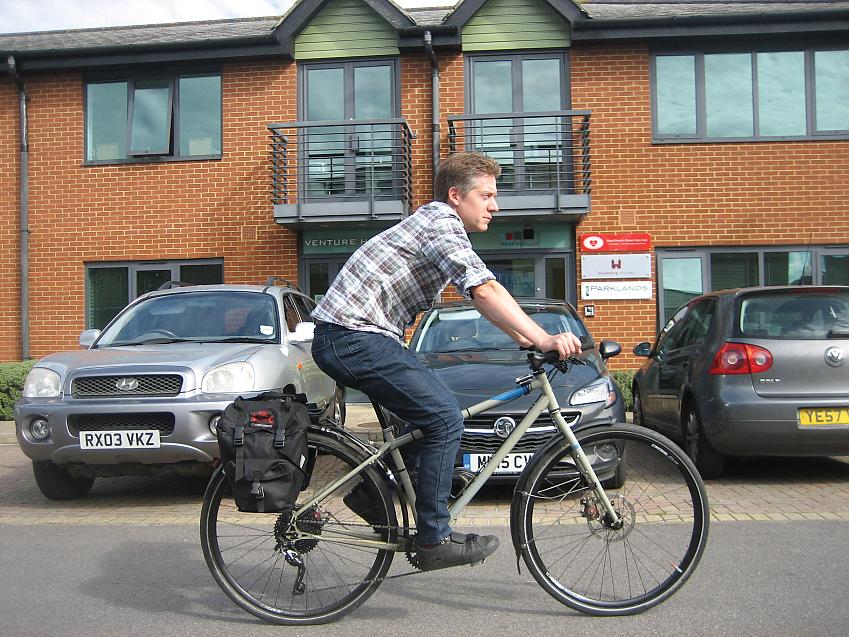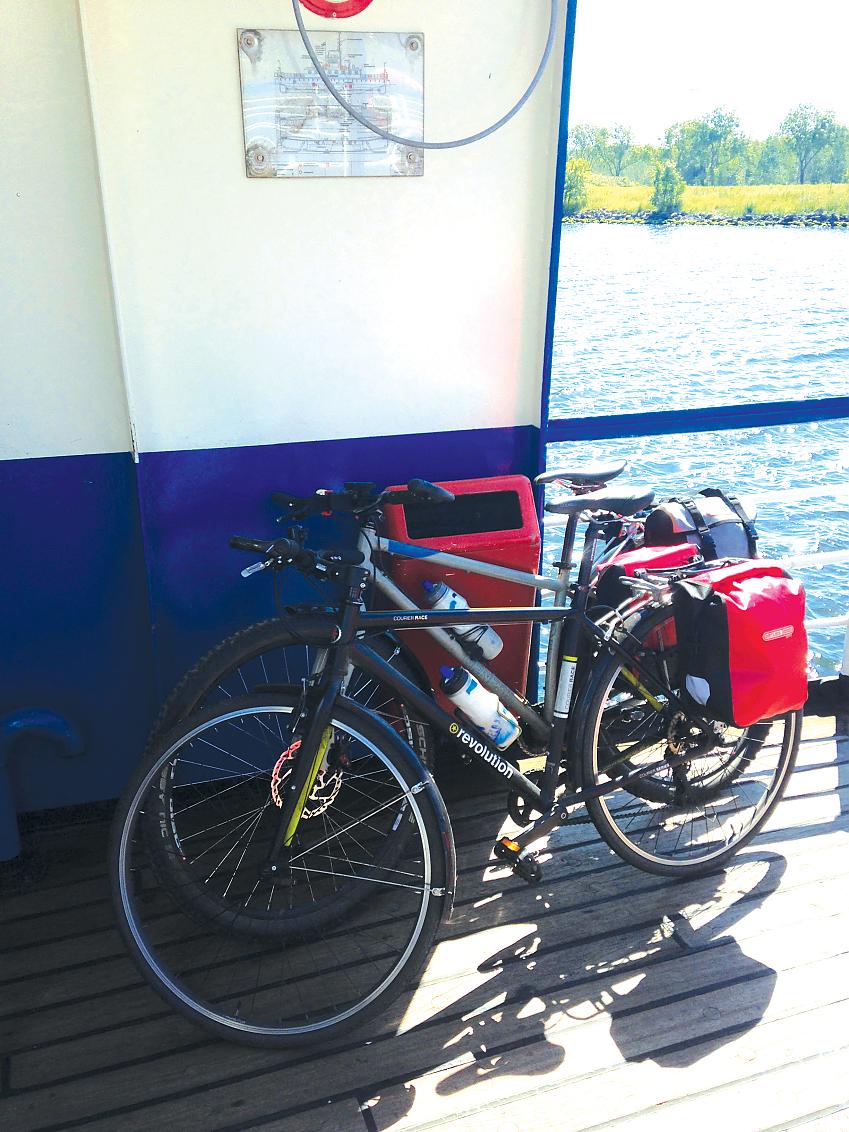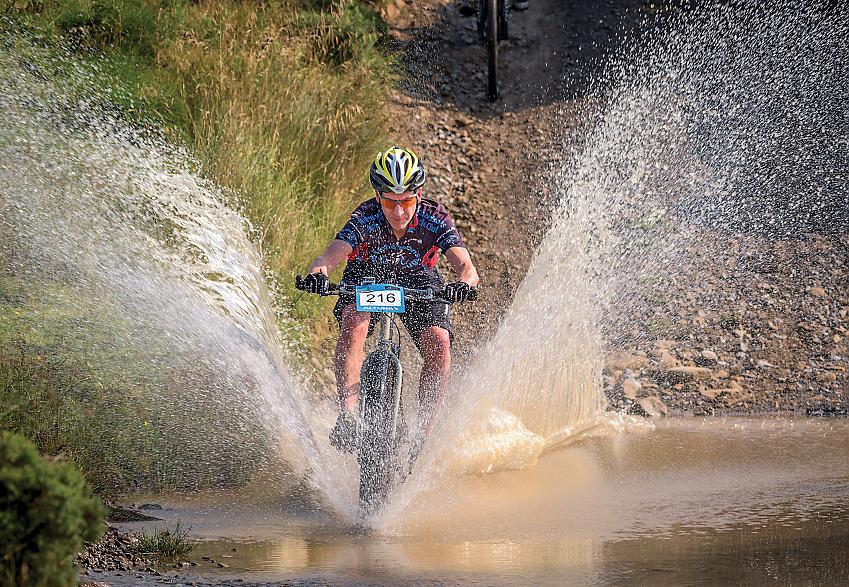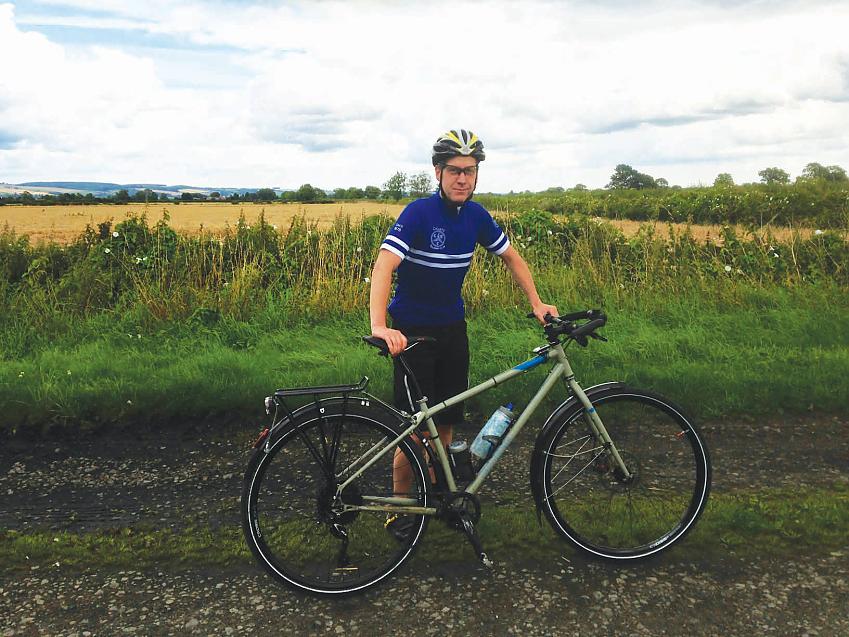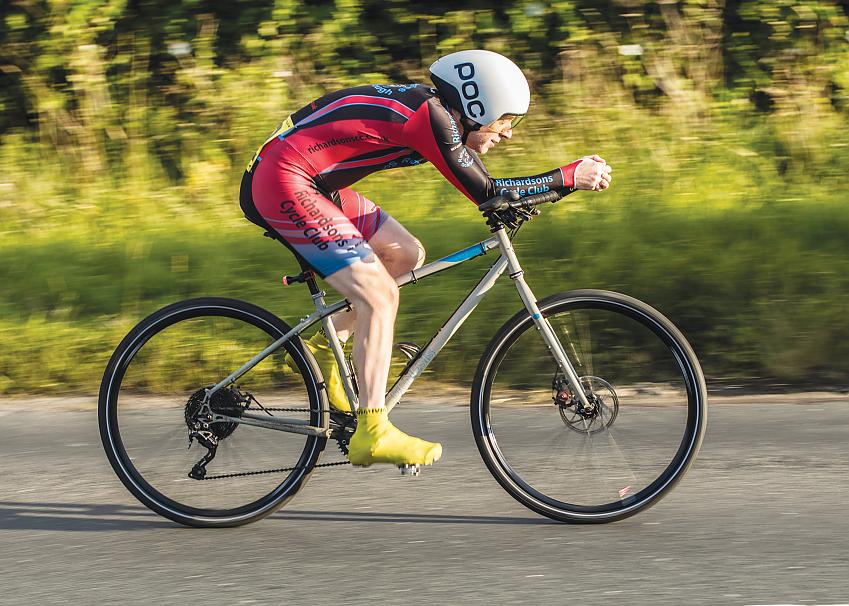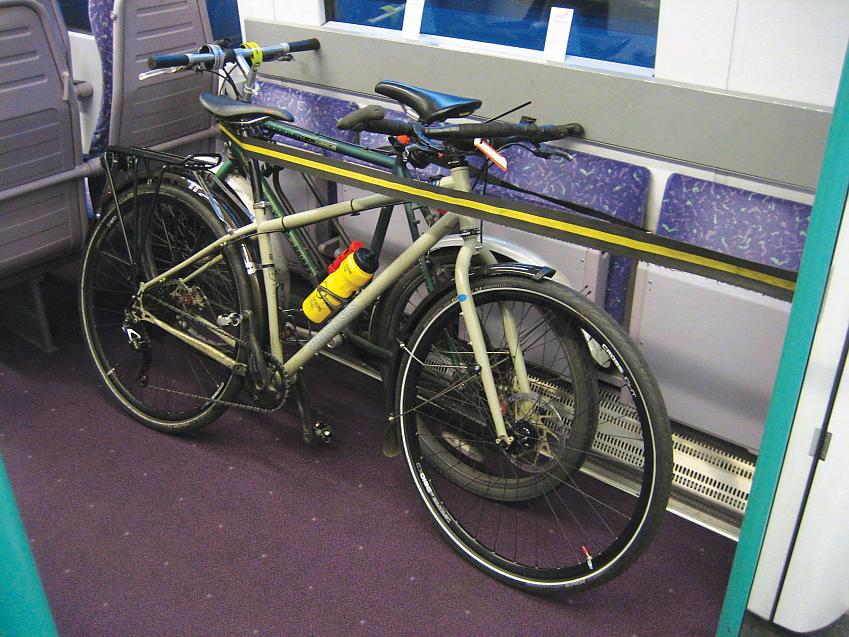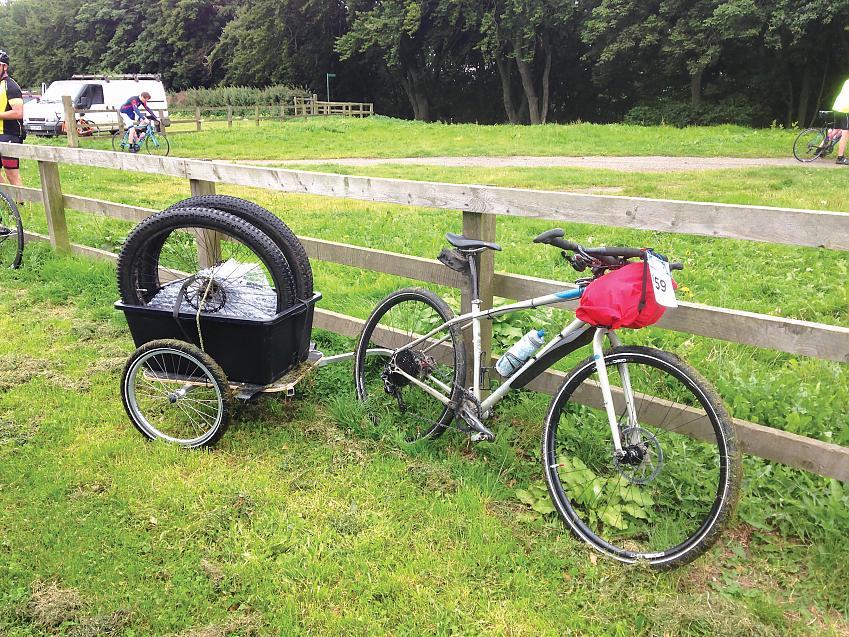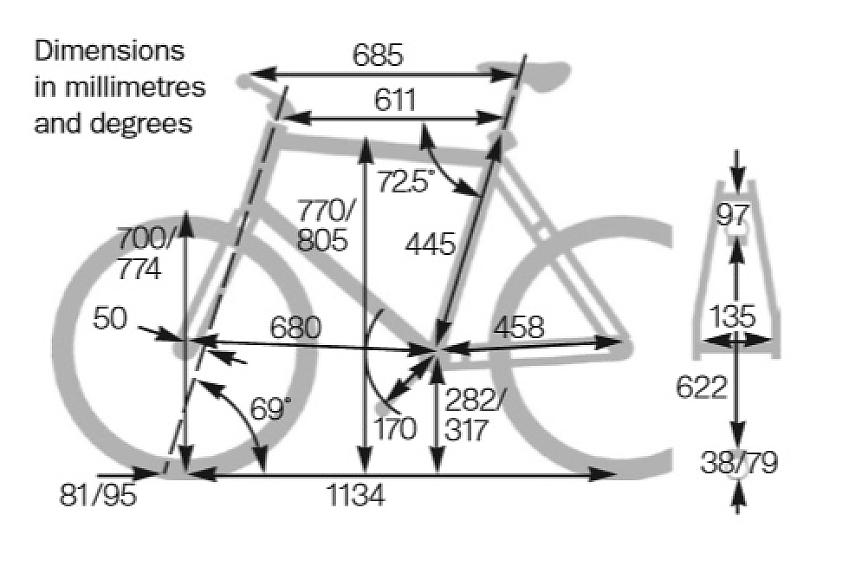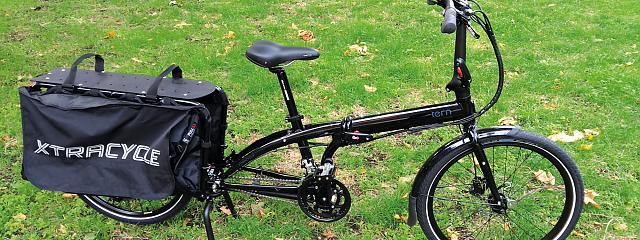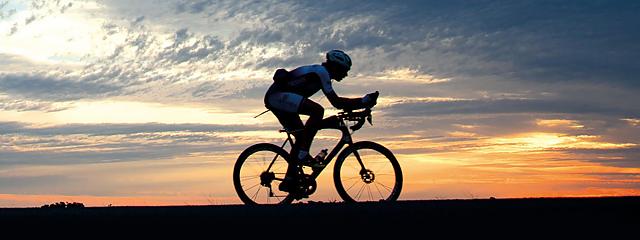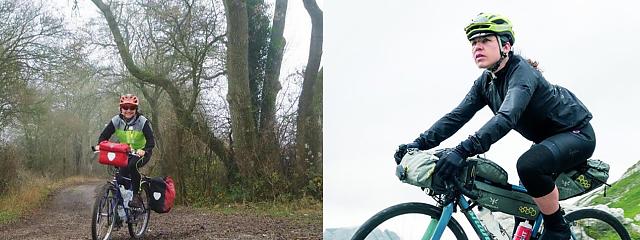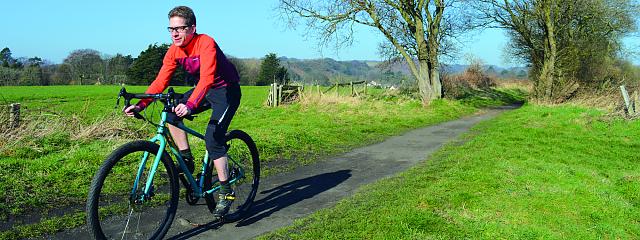
Bike test: One bike that does everything
Bike test: One bike that does everything
Bikes aren’t hugely expensive, so why own just one? Money, if it’s tight. Storage space, for the same reason. Or minimalism: the satisfaction of having no more than you need. For me, it was just an experiment.
If I had to have one bike for everything, what would it be and how would it perform?
We’ll all have different definitions of ‘everything’. With seven bikes in regular use, mine is fairly wide – and different from the cycle industry’s, whose ‘go anywhere, do anything’ bike du jour is the gravel bike. These cyclocross-inspired bikes aren’t one-trick ponies, it’s true, but many of them have limitations when it comes to hauling panniers and all of them are compromised off road.
Cyclocross tyres are fine on fireroads but are a pain when the going gets rougher. And unless your name is John Tomac, drops are a handicap at best and inadequate at worst on technical singletrack.
In any case, ‘traditional road handlebars’ are banned by the UCI for cross-country mountain bike racing, which I do a bit of. If I were turned away from an event by a British Cycling commissaire, I’d have failed to do my definition of ‘everything’.
In search of versatility
The bikes on my shortlist were all rigid mountain bikes with rack- and mudguard-ready frames and clearance for plus-size (2.8-3in) tyres: Surly Krampus; Surly ECR; Jones Plus; Singular Swift (with touring fork); Shand Bahookie; Genesis Longitude – both the current 27.5+ version and the 2015 29+ model that I have; and my Carver Gnarvester.
I picked my own Longitude. I already had it and, having used it as a mountain bike, a tourer and a town bike, knew it was capable in different roles. It was easier and neater to fit an SKS P50 front mudguard to it than the Carver, which has a Travers XC Prong carbon fork, and I was happier leaving the Longitude locked up in town.
With the frameset sorted, wheels were next. I needed two pairs: one for the road, one for off road. Off road was easy: I had 29+ wheels. For road use, I wanted something lighter and hopefully faster than the 29er wheels and tyres I’ve previously fitted to the Longitude for transport and touring.
Upgrade Bikes lent me some heavier-duty cyclocross wheels (Kinesis CX Disc HD), and for the tyres I used the new tubeless incarnation of Schwalbe’s Marathon Supreme – a fast-rolling touring tyre. Swapping the wheels changed the bottom bracket height significantly, which was fine: I wanted a lower bottom bracket for road use.
The gearing needed to be wide range but a triple chainset wasn’t an option: the chain would rub the 29+ tyre in bottom gear. While some doubles could work, I used a single chainring in a triple crank’s middle position instead: a 36t MRP Wave driving a 10-speed SunRace MX3 11-42 cassette (both from Ison Distribution).
This gave a range of 24-90in with the road wheels and 26-100in with the bigger off-road tyres. It worked well, and I wasn’t at all bothered by the big steps between gears.
As I was using disc brakes, I figured I could just drop the wheels in and out. It wasn’t that simple. The Centrelock rotors on the Kinesis wheels sat slightly further inboard than the six-bolt rotors on the Surly Rabbithole wheels, particularly at the rear.
As I was using Avid BB7 brakes, I could dial the pistons in and out. Without this facility, I’d have been adjusting the calliper positions every time. Two pairs of wheels with six-bolt rotors would have been better, as any discrepancies could have been fixed with spacer washers.
I was determined to fit proper mudguards for everyday use. Partly because the 2015 Longitude lacks a normal seatstay brace, and partly because I wanted to speed up fitting and removal, I left off the rear mudguard stays and secured the ’guard to the rack.
It took around 15 minutes to turn the commuter/tourer into a mountain bike or vice-versa. That included adjusting the saddle height. I used three different settings: on road; off road; time trialling. The cheap seat collar was loosened and fastened so often the threads sheared, so I replaced it with a robust stainless steel one from Surly.
Here’s how I got on with the bike in its different incarnations.
Town bike
Replacing: Ridgeback Solo World
Cycling is my day-to-day transport, accounting for the largest number of bike journeys I make (although not the most miles), so this was the Longitude’s most important role. Like my fixie, it had to have lights, some luggage capacity and full-length mudguards. It also had to be comfortable to ride in normal clothes – a definition stretched to include casual SPD trainers, since they’re my default footwear around town.
Short urban journeys aren’t particularly demanding, so it was no surprise that the Longitude performed this role well. The wide handlebar made it more awkward to D-lock to railings than my fixie, whose narrow drops can be hooked over the top. The bar width compromised the fit of my rain cape too, the one time I rode in a deluge.
I was worried about casual theft of the front wheel when I left it in town for a few hours, so took an extra lock. The rear wheel was tricky to remove with the rack-and-mudguard in place due to the Longitude’s rear-facing dropouts – a blessing for security, but potentially awkward for punctures.
I didn’t get any: Marathon Supremes are robust and these had tubeless sealant inside. If I were doing this again, however, I’d use security skewers for the road wheels.
Touring bike
Replacing: itself
It wouldn’t be everyone’s choice, but the Longitude already is my touring bike. I’m happy with a flat bar, as long as it has bar ends, and like having tyres (normally Schwalbe Big Apples) wide enough to tackle any reasonable track.
The tough steel frame, unlike a certain Prime Minister, really is strong and stable, and the long chainstays mean that big rear panniers fit fine. I tended to use small ones, so a bottom gear of 24in wasn’t a problem. Nor was the lack of a high top gear, which isn’t important to me for touring. (On my last moving-on trip, I used a single 32t chainring.)
While I did only day rides during the month-long trial, the Longitude hasn’t let me down when travelling further. I’ve not yet used it for bikepacking with off-road wheels and frame bags, but I’m sure it would handle that even better; it’s what it’s designed for.
Mountain bike
Replacing: Carver Gnarvester
I didn’t want telescopic suspension for any of the bike’s other applications. That was why I picked a rigid 29+ bike over a rigid 29er. Three-inch tyres at 9-12psi are not the bruising experience off road that 2-inch tyres at 25-30psi can be.
The Longitude’s weight made itself felt on long, draggy climbs, but apart from that and a larger-than-optimum chainring, it was fine. Its first outing in the test month was a 35-mile off-road loop that involved following – and leading – club mates on full-suspension bikes down the lumpy bridleway descent off Fylingdales Moor.
Other journeys took in just about every kind of natural terrain you’d expect in England, as well as choppier trail centre surfaces where a suspension fork would have been nice.
The cross-country mountain bike race I was due to compete in was cancelled. I did take part in a summer cyclocross race at the Scarborough Festival of Cycling. I got a few funny looks on the start line but finished 16th out of 53, and didn’t envy the ’cross bike riders.
A heavy shower meant that all bikes were soon plastered in mud and grass, leading to lots of mechanicals and three DNFs, while the slippery corners were evidently treacherous on cyclocross tyres. With its Surly Dirt Wizard front tyre, big clearances, and single chainring, the Longitude was untroubled by the conditions.
Road bike
Replacing: Pinnacle Dolomite 3
The extra hand positions provided by the Alpkit Love Mud Confucius handlebar, which I seldom used off road, were great on road. I could ride with my hands closer together, similar to where they’d be on the tops or hoods of a drop-bar bike. With a more aerodynamic profile and easy-rolling tyres, it wasn’t a struggle to keep up on the club run.
With a more aerodynamic profile and easy-rolling tyres, it wasn’t a struggle to keep up on the club run
Joyce, Cycle magazine editor
I went out with the fast group on a 65-mile Sunday ride into the Wolds and back through the Vale of Pickering. The pace was brisk – an average moving speed of 17.8mph – but not chain-gang fast. The Longitude’s weight was again evident on long climbs, and the 90in top gear meant freewheeling sooner on fast descents.
Yet it wasn’t notably slow overall and it was comfortable. Some clubmates on carbon road bikes were stretching their backs and shoulders towards the end of the ride…
During the aforementioned Scarborough Festival of Cycling, I entered the shorter of two sportives: a 30-mile ride that went into the Wolds once again. I’d have done the 60-mile event but fancied the cyclocross race that afternoon. As with the club ride, the sportive’s pace was fine, and I got back in plenty of time to swap over the Longitude’s wheels.
On solo rides, any compromises compared to a road bike were irrelevant. The Longitude’s gearing was lower, so I could ride up climbs like Blakey Bank (20%) without suffering. Potentially unnerving road descents were easy, thanks to superior brakes and more rubber in contact with the road.
Time-trial bike
Replacing: Surly Steamroller
The Longitude was never going to make a decent time-trial bike. I initially tried to get aero by riding with my forearms on the bar, hands dangling. Comfort and bike control were poor. So I bolted an old stem to the front loop of the Alpkit bar, an idea inspired by Jeff Jones.
Control was much better, comfort not so much. I cable-tied on some old arm-rest cups. As my arms were resting on the front loop too, it didn’t matter that the cups weren’t bolted fast.
Riding like this, in full TT kit, I did a couple of local events: a 10 and a 15, recording average speeds of 23.0mph and 22.9mph respectively. It was a loss of 2mph or more to my time trial bike. The gearing was OK: 23mph in a 90in gear is a cadence of 86.
The main problem was the riding position, which was just wrong. The front end was too high and I was sitting too far back, so the effort seemed to be coming less from my quads and more from my glutes, hamstrings and calves. It was like kicking a football over and over.
Matters might be improved by choosing a bike with a shorter head tube. That way a steeply angled stem could put the handlebar level with the saddle for most purposes, then flipped over for a low TT position. A spare seatpost, fitted with a time-trial saddle set much further forward, would also help, as would a third pair of wheels…
‘Folding’ bike
Replacing: Brompton M3L
Clearly, the Longitude doesn’t fold. In a money-no-object one-bike scenario, I’d have S&S Couplings fitted to make it easier to transport. In this instance, ‘folding’ means that I used it instead of my old Brompton.
I twice jammed it into the back of a hire car, which had to be picked up and dropped off five miles away. I also travelled by train to Cycling UK’s office in Guildford. I bought the tickets and reserved bike spaces using ScotRail’s website, as the Virgin East Coast site is no longer bike friendly.
The first leg to York went fine. The train to London King’s Cross was late. I asked staff where to wait with my bike for the guard’s van and was directed to the far end of the platform. Then an announcement came over the tannoy: the train was in reverse formation. I trooped back to the information booth. No, the tannoy man was wrong; it was in normal formation. Back to the end of the platform…
After cycling across London to Waterloo, I found the whole station in disarray. Ten platforms were shut, a train had derailed on one of the open ones the night before, and every train on the information board was cancelled or delayed.
Already running late, and with a bike reservation not required for this leg, I hopped on the first train going in the right direction. It took me as far as Woking, where onward trains to Guildford were further delayed. Google Maps revealed that the office was only 5.5 miles away, close enough that I could cycle there quicker. So I did.
Thoughts of train cancellations and substitute buses worried me
Dan Joyce
The thought of delays, cancellations and substitute buses or taxis worried me for the return journey. I’d bought split tickets, including a couple of Advance Singles, and my bike and I both had to be on the 18:30 from King’s Cross. Predictably, the train from Guildford to Waterloo was also delayed, meaning a sweaty sprint across London.
The train into York arrived late too. I couldn’t just jump out like I would with a folder, so instead stood on the platform semaphoring wildly to the guard, who casually ambled up to unlock the guard’s van. I ran down the platform and just made my final train. Verdict? Stressful.
Cargo bike
Replacing: Yuba Mundo
With no access to my cargo bike, I used a Carry Freedom Y-Frame Large trailer to haul loads that wouldn’t fit the Longitude’s rear rack. These included: my Brompton, for a friend to ride when I picked him up from the railway station; some wood for my stove; and my off-road wheels when I cycled to the Scarborough Festival of Cycling.
The Longitude was almost perfect for towing a trailer; it’s stable, sturdy and has good brakes. A lower bottom gear would’ve been handy if I’d had to tow anything really heavy, but as I was transporting bulk rather than weight, and was only going short distances, it was fine.
Conclusions
Few bikes are so specialised that they’ll do one thing only, so I wasn’t surprised to find that the Longitude could stand in for any of my other bikes. What was more surprising was that, with 539 miles ridden over 30 days, it did everything except time trialling and train travel reasonably well.
As cycling enthusiasts, we sometimes obsess over fine details that do make a difference but not, in the grand scheme of things, that much of a difference. Having said that, I did miss my other bikes.
There were times when I wished the Longitude were lighter. I also began to slightly resent taking the mudguards and rack on and off. In hindsight, I’d try a Carradice saddlebag and/or bikepacking bags for luggage, and experiment with wing-nuts and wing-bolts to get the mudguards on and off more easily.
In short: one bike can do everything, if it’s good enough at the things you care about most. On the other hand, if you’ve got the funds and space and don’t want to compromise, having more bikes is more fun. I won’t be selling mine any time soon.
First published in Cycle magazine, December 2017/January 2018 issue. All information correct at time of publishing.
Our test promise
At Cycling UK and Cycle magazine, we are proudly independent. There’s no pressure to please advertisers as we’re funded by our members. Our product reviews aren’t press releases; they’re written by experienced cyclists after thorough testing.
Tech spec
Genesis Longitude frameset (2015)
Price: frameset £375 (current version £449.99). As spec’d ~£1400
Size: 17.5in
Weight: 13.6kg (commu-tourer, as shown), 14.35kg (MTB, as shown)
Frame & fork: Double-butted chromoly frame and fork with fittings for disc brakes, mudguards, racks, 3 bottles, 2 fork cages
Wheels: 42-622 Marathon Supreme tubeless tyres, Kinesis CX Disc HD 32-spoke wheels OR 75-622 Surly Dirt Wizard 60tpi front and 79-622 Surly Knard 120tpi rear tyres, ‘ghetto’ tubeless, on Surly Rabbithole 29+ wheels with 50mm rims, Surly hubs, and 32 spokes
Transmission: Shimano M520 SPD pedals, 170mm Shimano Deore chainset, 36T MRP Wave chainring, KMC X10-73 chain, SunRace MX3 11-42 10-speed cassette. Shimano Zee shifter, Shimano SLX derailleur. 10 ratios, 24-90in OR 26-100in
Braking: Avid Speed Dial 7 brake levers, Avid BB7 mechanical discs, 180mm front/160mm rear rotors
Steering & seating: cork bar tape, 700×31.8mm Alpkit Love Mud Confucius bar, 75mm×7° stem, Cane Creek Ergo bar ends, FSA Orbit Equipe headset. Charge Spoon saddle, 27.2mm Thomson Elite Layback seatpost, Surly Stainless seat collar
Equipment: SKS Chromoplastic 700C P50 mudguards or Crudcatcher front mudguard, Topeak Explorer 29er rack with XL brackets, Busch und Müller Toplight Flat S Permanent rear light, CatEye Volt 300 front light, 2 bottle cages, Topeak Mini Morph pump, Garmin Edge 500






